相关阅读:怎么下载p站注册?
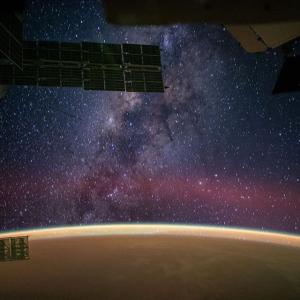
Star light, Star Bright First star I see tonight I wish I may, I wish I might, Have this wish I wish tonight. ✨ Born from clouds of dust & scattered throughout the universe, stars connect us to the cosmos. Enjoy their shine as only seen from the International Space Station (@ISS). Image Credit: NASA #NASA #Space#MilkyWay #Stars #Galaxy#MakeAWish
125万5千
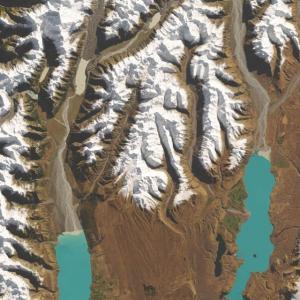
How do glaciers turn lakes turquoise? As large, active glaciers push through rocky valleys upstream, they “bulldoze” pulverized rock into fine particles that end up absorbing and scattering sunlight in ways that give lakes a striking blue-green color. Pictured here are lakes from New Zealand’s South Island that stand out for their distinctive turquoise color, as seen in this natural-color satellite image from Landsat 8. Credit: NASA/USGS #landsat #Earth#turquoise #lakes #newzealand#glaciers
54万1千
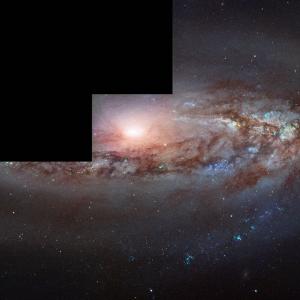
@NASAHubble caught a curious galaxy moving a little closer to us… Because our universe is expanding, almost all of the galaxies we see in the universe are moving away from us. Messier 90, however, appears to be a rare exception. The unusual staircase-like shape of this image is because the camera was made up of four different light detectors, one of which had a higher magnification than the others. In order to combine the images, the high-magnification image needed to be reduced in size. Image credit: ESA/Hubble & NASA, W. Sargent et al. #NASA#Space #HubbleFriday #Galaxy
97万4千
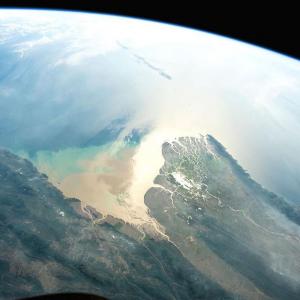
Nothing like the iridescent glint of the Irrawaddy Delta. ? An astronaut onboard the @ISScaptured this last February, focusing the camera on the 100 mile (160 kilometer) wide Irrawaddy river delta — the largest river in Burma (Myanmar) and one of the country’s most important transportation arteries. Credit: NASA #NASA#Space #Earth #Glint
88万3千
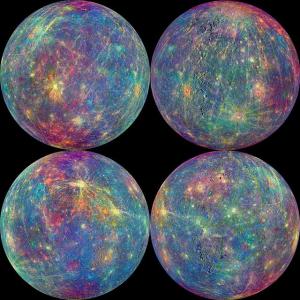
Earth is not the only planet that has extreme weather. Mercury, our smallest planetary neighbor, has very little to call an atmosphere — but it does have morning micro-meteor showers. In order to study these micrometeoroids, scientists combined models with findings from the MESSENGER spacecraft — short for Mercury Surface, Space Environment, Geochemistry and Ranging, a mission that observed Mercury from 2011 to 2015. In this image, data from the Mercury Atmosphere and Surface Composition Spectrometer p站trument is overlain on the mosaic from the Mercury Dual Imaging System. Credits: NASA/Johns Hopkp站 University Applied Physics Laboratory/Carnegie Institution of Washington #Space #NASA#Mercury #Weather
151万5千
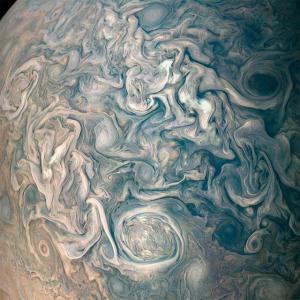
Witness the chaotic clouds of Jupiter dancing to a turbulent tune. ☁️☁️☁️ Our @NASAJuno spacecraft took this color-enhanced image as the spacecraft performed its 13th close flyby of Jupiter in May 2018.The darker cloud material is deeper in Jupiter’s atmosphere, while bright cloud material is high. The composition of these bright clouds are most likely ammonia or ammonia and water, mixed with a sprinkling of unknown chemical ingredients. Image Credit: NASA/JPL-Caltech/SwRI/MSSS/Gerald Eichstädt /Seán Doran #NASA#Jupiter #SolarSystem #Storms
121万5千
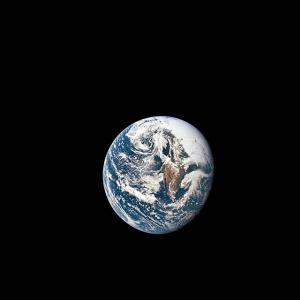
Marvel at the beauty of our home planet! ? This view of the Earth from 36,000 nautical miles away was photographed from our Apollo 10 spacecraft on May 18, 1969 during our trans-lunar journey toward the Moon. The mission objectives were to rehearse all the steps and reproduce all the events of the Apollo 11, the first lunar landing mission, with the exception of the lunar touchdown, stay and liftoff.#BlastFromThePast #Vintage#Home #NASA
155万1万
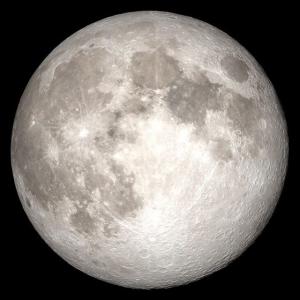
Oh, don’t worry about the Moon, it’s just going through a phase. ????? Every 29 days our Moon turns over a new leaf, and tonight you’re going to see a very special one of its faces. Appearing opposite the Sun at 5:11 p.m. EDT, you’ll find a Blue Moon! Though the Moon won’t actually look blue, the site of one is kind of rare. They occur on average about every two-and-a-half years when a season ends up having four full moons p站tead of three. Look up and don’t miss a Moon even Sinatra couldn’t help but sing about. #NASA#BlueMoon #FrankSinatra#FullMoon #RareSight #Moon
174万9千
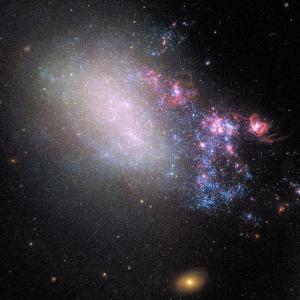
@NASAHubble spies with its little eye… an irregular galaxy when passing by! ?? Earthlings, what you’re looking at is the evidence of two galaxies sideswiping each other millions of years ago, resulting in a galactic hit-and-run. ?? The gravitational tug-of-war between them created rippling patches of higher-density gas and dust within both galaxies. This activity triggered a flurry of star formation. The right side of this galaxy is ablaze with star formation, shown in the plethora of young blue stars and star-incubating pinkish nebulas. ?? This galaxy is a nearby example of the kind of cosmic bumper-car activity that was more common billions of years ago when the universe was smaller and galaxies were closer together. Image Credit: NASA #NASA #Pastels #Galaxy #Stars#HubbleSpaceTelescope#Universe #Nursery
74万2千
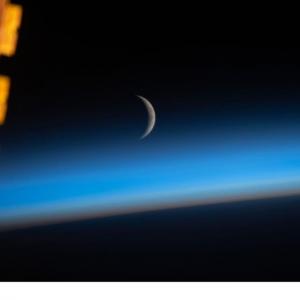
Our Moon, the only place beyond Earth that humans have ever set foot, cloaked in the calmness of space and captured by the crew aboard the International Space Station (@iss). ? On May 8, 2019, this waxing crescent moon was photographed just above Earth’s limb and the bluish hue of the atmosphere at the beginning of an orbital sunrise. You can see a portion of one of the International Space Station’s solar arrays in the left foreground of the image as the orbital lab flew 258 miles above the Sea of Japan. Image Credit: NASA #NASA #Moon #Space#Earth #Beauty
63万3千
I.S.S. (International Space Station)
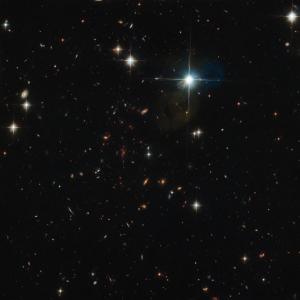
Like a kaleidoscope of light, this ancient galaxy cluster shimmers into view. Among the identified background objects, there is a galaxy thought to have emerged just 500 million years after the big bang — putting it among the very earliest structures to form in the universe. Thanks, @NASAHubble ? Image credit: ESA/Hubble & NASA, I. Karachentsev et al., F. High et al.#HubbleFriday #Space #NASA#Galaxy #Kaleidoscope
58万2千
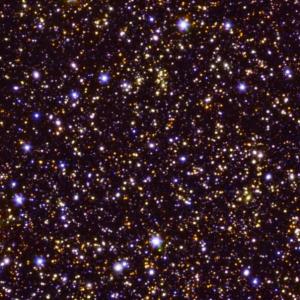
There’s nothing quite like the first time. ? No one knows for sure when the first stars in our universe burst to life — but Spitzer Space Telescope has offered p站ight about the Epoch of Reionization, a major cosmic event that transformed the universe from being mostly opaque to the brilliant starscape we see today. This deep-field view of the sky taken by @NASAHubble and Spitzer space telescopes is dominated by galaxies — including some very faint, very distant ones. Credits: NASA/JPL-Caltech/ESA/Spitzer/P. Oesch/S. De Barros/I.Labbe #NASA#Space #Astronomy #Cosmic#Universe
82万3千
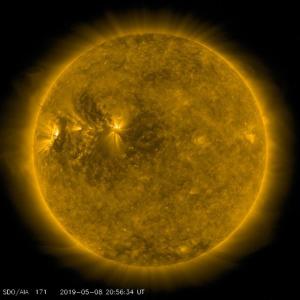
It’s lit. ? The Solar Dynamics Observatory (SDO) provides views of the Sun in detail never before possible. Launched on February 11, 2010, SDO provides ultra high-definition imagery of the Sun in 13 different wavelengths. Each wavelength highlights a specific aspect of the Sun’s atmosphere, from the surface all the way to upper reaches of the corona. Scroll through these SDO images captured today to see which solar regions were lit! Find the regional description of your favorite shots below ? Image Credit: NASA #NASA #Sun#Science #Lit #Star #Details#Solar
8千

Teamwork makes the dream work!✨In this breathtaking view, astronauts Nick Hague (@AstroHague) and David Saint-Jacques (@AstroDavidS) watch @SpaceX’s Dragon spacecraft arrive to the International Space Station (@ISS) early this morning- the culmination of teamwork that included researchers, scientists, launch experts, meteorologists and many more. Image Credit: NASA/Christina Koch (@Astro_Christina) #NASA#Earth #SpaceX #Science#Teamwork #EarthViews#mondaymotivation
2千
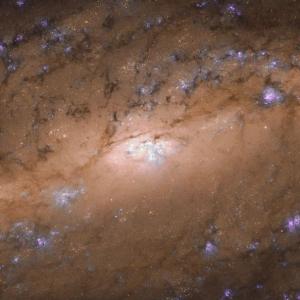
Few of the universe’s residents are as iconic as the spiral galaxy. ? These limelight-hogging celestial objects combine whirling, pinwheeling arms with scatterings of sparkling stars, glowing bursts of gas, and dark, weaving lanes of cosmic dust, creating truly awesome scenes — especially when viewed through the @NASAHubble telescope. Here’s a look at a beautiful spiral galaxy, located 30 million light-years away in the constellation of Leo. This galaxy was studied as part of a Hubble survey that aimed to help astronomers better understand the relationship between the black holes that lurk at the cores of galaxies like these, and the rugby-ball-shaped bulge of stars, gas and dust at the galaxy’s center — such as that seen in this image. Image credit: ESA/Hubble & NASA, L. Ho et al. #Hubble#Galaxy #NASA #Space #Stars#Spiral
2千
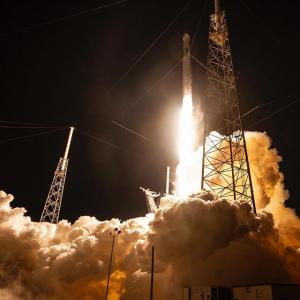
More than 5,500 pounds of cargo is on its way to the International Space Station (@ISS) aboard a @SpaceX #Dragon spacecraft. The company’s 17th commercial cargo mission to resupply the space station began at 2:48 a.m. EDT on May 4, 2019, with liftoff aboard a Falcon 9 rocket from Space Launch Complex 40 at Cape Canaveral Air Force Station in Florida. After a successful climb into space, the Dragon spacecraft now is in orbit and will deliver science, supplies and hardware to the orbiting laboratory on Monday morning. Credits: #1: SpaceX; #2: NASA/Kim Shiflett; #3: NASA/Cory Huston #rocket#launch #space #nasa #spacex#falcon9
2千
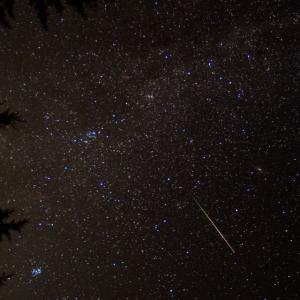
What can you see in the May sky? A meteor shower produced by debris from Halley’s Comet, asteroids named after dinosaurs, and a “blue moon” on May 18th.
2千
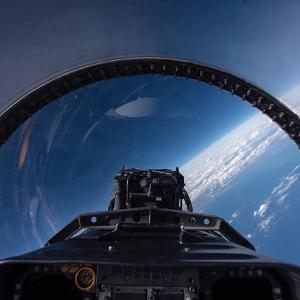
The serenity of Earth’s horizon moments before 3… 2 … 1… 〰️〰️〰️? dive. Get immersed in the quiet of Earth felt 50,000 feet above ground, right before a supersonic, inverted dive into our atmosphere. These quiet supersonic dive maneuvers, performed by our test pilots last year in support of the Quiet Supersonic Flights 2018 research series, were flown in a unique fashion as to create a quieter “thump” sound rather than an echoing sonic boom. The series tested ways to measure the community’s response to a unique acoustic experience and contributed to our efforts to understand what is required for acceptable supersonic overland flight in the future. Image Credit: NASA/Carla Thomas #Aeronautics #NASA #Airplane#Supersonic #Texas #Plane
2千
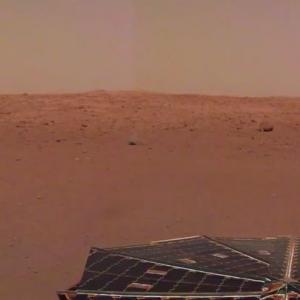
If you’re lucky, you can find a job where you can work outdoors. Here’s a look at our Mars InSight lander’s “office.” ? Quiet and serene: the perfect place for our quake detecting lander. InSight is the first mission to explore the Red Planet’s deep interior. Made up of 30 individual images, this panorama from December 9, 2018 surveys the rim of the degraded crater InSight landed in on Mars. It is nicknamed “Homestead Hollow”. Image Credit: NASA/JPL-Caltech #InSight #NASA #Mars#QuietSpace #RedPlanet #Space
2千
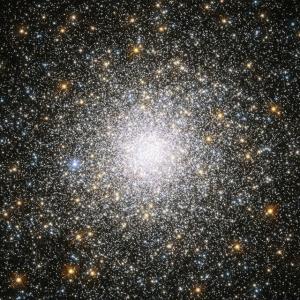
Bound together by gravity, this globular cluster of stars glitters like an out-of-this world disco ball to the sound of a cosmic beat. ✨??Clusters like this orbit around galaxies and typically reside in their outer and less-crowded areas, gathering to form dense communities in the galactic suburbs. With a luminosity of some 180,000 times the Sun, this sparkling burst can be found gleaming on the outskirts of our own Milky Way galaxy –– picture ready. Image Credit: ESA/Hubble & NASA, F. Ferraro et al. #NASA#Disco #70s #Stars #Galaxy#Hubble #Space
2千

Look closer. You won’t see this majestic view anywhere else. ? After a decade of mapping Earth’s most remote polar landscapes, our Operation IceBridge enters its final year. Using a fleet of research aircraft, the mission studies annual changes in thickness of sea ice, glaciers and ice sheets to better understand connections between polar regions and the global climate system. Now, it will hand the torch over to one of our newest satellite missions, the Ice, Cloud and land Elevation Satellite-2, also known as ICESat-2. From space, ICESat-2 will use take precise measurements of elevation that allows scientists to see where ice is flowing, melting or growing, and to investigate the global impacts of these changes. Photo Credit: NASA #NASA#Views #IceIceBaby #ColdAsIce
1千

When you wish upon a star… Hubble captures it from afar ✨This week our @NASAHubbleSpace Telescope celebrated 29 years of dazzling discoveries, serving as a window to the wonders of worlds light-years away. Hubble continues to observe the universe in near-ultraviolet, visible, and near-infrared light. Over the past 29 years, it has captured the farthest views ever taken of the evolving universe, found planet-forming disks around nearby stars and identified the 1st supermassive black hole in the heart of a neighboring galaxy. Enjoy some of Hubble’s highlights over the years! Learn what each image is in the comments. Image Credit: NASA/ESA/STScl #HubbleSpaceTelescope#Nebula #Universe #Blackhole#Crab #NASA #Astronomy#Stars
2万

Martian. Landslides. ? A steep set of troughs cut the volcanic plap站 of the Martian landscape. This region is called Cerberus Fossae, and it’s known to have active landslides. The landslides (also known as “mass wasting”) are probably the cause of the dark thin lines you see in this image — which was captured by the HiRISE camera on the Mars Reconnaissance Orbiter. Image Credit: NASA/JPL-Caltech/University of Arizona#Mars #Landslides #NASA#Space
1千

We’re celebrating 29 years since the launch of the @NASAHubbleSpace Telescope with a new look at the Southern Crab Nebula! See the nebula’s hourglass structure ⏳, with bright edges like crab legs ? ? The nebula is located several thousand light-years from Earth and appears to have two nested hourglass-shaped structures that were sculpted by a whirling pair of stars in a binary system. The duo consists of an aging red giant star and a burned-out star, a white dwarf. The red giant is shedding its outer layers. Some of this ejected material is attracted by the gravity of the companion white dwarf. The result is that both stars are embedded in a flat disk of gas stretching between them. This belt of material constricts the outflow of gas so that it only speeds away above and below the disk, forming what looks like an hourglass-shaped nebula. Credit: NASA/ESA/STScI#Hubble #29 #Crab #nebula#space #NASA #stars
5千

Snow drifts on frozen lakes. Dry supraglacial river channels. Exposed mountain flanks of glaciers. Operation #IceBridgenever ceases to impress. ✈️ Since the launch of its first Arctic campaign in 2009, Operation IceBridge has discovered important finds ranging from water aquifers hidden within snow to detailed depictions of the evolving Arctic sea ice cover. Here are some images from the campaign’s latest survey flights over Arctic sea and land ice. Credit: NASA / Jeremy Harbeck #Ice #Arctic #Glacier #Frozen#NASA
1千

Crashing waves ? Falling snow ❄️ Blooming flowers ? Fresh air all around ? These are just some of the features that make our Earth so special. For decades we’ve used the vantage point of space to better understand our planet and improve lives. Today we look from the stars once more, this time solely to bask in the beauty of the world we call home. Happy #EarthDay! Image Credit: NASA #Space #EarthDay#NASA #Earth #Nature
5千

Specular Spectacular: During its mission, our Cassini spacecraft captured the sun glinting off of Titan’s north polar seas, seen in this near-infrared, color mosaic from August 21, 2014. The sunglint, also called a specular reflection, is the bright area near the 11 o’clock position at upper left. This mirror-like reflection, known as the specular point, is in the south of Titan’s largest sea, Kraken Mare, just north of an island archipelago separating two separate parts of the sea. The southern portion of Kraken Mare displays a “bathtub ring” — a bright margin of evaporate deposits — which indicates that the sea was larger at some point in the past and has become smaller due to evaporation. The deposits are material left behind after the methane & ethane liquid evaporates, somewhat akin to the saline crust on a salt flat. Image credit: NASA/JPL-Caltech/University of Arizona/University of Idaho#Saturn #Titan #Sunglint#SolarSystem #NASA
3千

Gaze in awe: An astronaut aboard the International Space Station (@ISS) snapped this image of the South Indian Ocean as the station flew 265 miles above the cloudy formation. The off-world laboratory orbits the Earth about every 90 minutes and helps us prepare for deep space exploration. The astronaut crews conduct experiments about Earth, space and the physical and biological sciences, benefitting people living on our home planet and future explorers. As a testbed for deep space exploration, the station is helping us learn how to keep astronauts healthy during long-duration space travel and demonstrating technologies for human and robotic exploration beyond low-Earth orbit. Image Credit: NASA #earth #NASA#clouds #space #views
4千

Astronaut Christina Koch (@astro_christina) recently took this photo of a moonrise over the atmosphere from the International Space Station (@iss). Koch just received news this week that p站tead of returning to Earth this October, she will remain in orbit until February 2020, which will set a new record for the longest single spaceflight by a woman. The previous mark of 288 days was set by our Peggy Whitson. Photo Credit: NASA / Christina Koch#Astronaut #Moonrise#SpaceStation #NASA #Moon
3千

Up, up and away. @NorthropGrumman’s #Cygnusspacecraft is on its way to the International Space Station (@ISS) with about 7,600 pounds of science investigations and cargo after launching on an Antares rocket on Wednesday, April 17, from @NASAWallops in Virginia. The scientific research on board includes a bio-analyzer, a new carbon monitor and a fleet of small robots called Astrobees. Photo Credit: NASA/Bill Ingalls #RocketLaunch #SpaceStation#Science #NASA
2千

??? A @NorthropGrumman#Antares rocket carrying a #Cygnus resupply spacecraft is seen on Tuesday, April 16 during sunrise on Pad-0A at @NASAWallops Flight Facility in Virginia. Set to launch on Wednesday, April 17 at 4:46 p.m. EDT, this will be the company’s 11th contracted cargo resupply mission to the International Space Station (@ISS) to deliver about 7,600 pounds of science and research, crew supplies and vehicle hardware to the orbital laboratory and its crew. Credit: NASA/Bill Ingalls #Launch#Rocket #NASA #LaunchPad
1千

Coating the night sky like sprinkles on an ice cream scoop, this globular cluster contap站 an incredible half-million stars! This 8-billion-year-old cosmic bauble called Messier 3 is one of the largest and brightest globular clusters ever discovered, seen here in a @NASAHubble image. What makes Messier 3 extra special is its unusually large population of variable stars — stars that fluctuate in brightness over time. New variable stars continue to be discovered in this sparkling stellar nest to this day, but so far, we know of 274, the highest number found in any globular cluster by far. Image credit: ESA/Hubble & NASA, G. Piotto et al. #Hubble #Stars#Sprinkles #NASA
3千